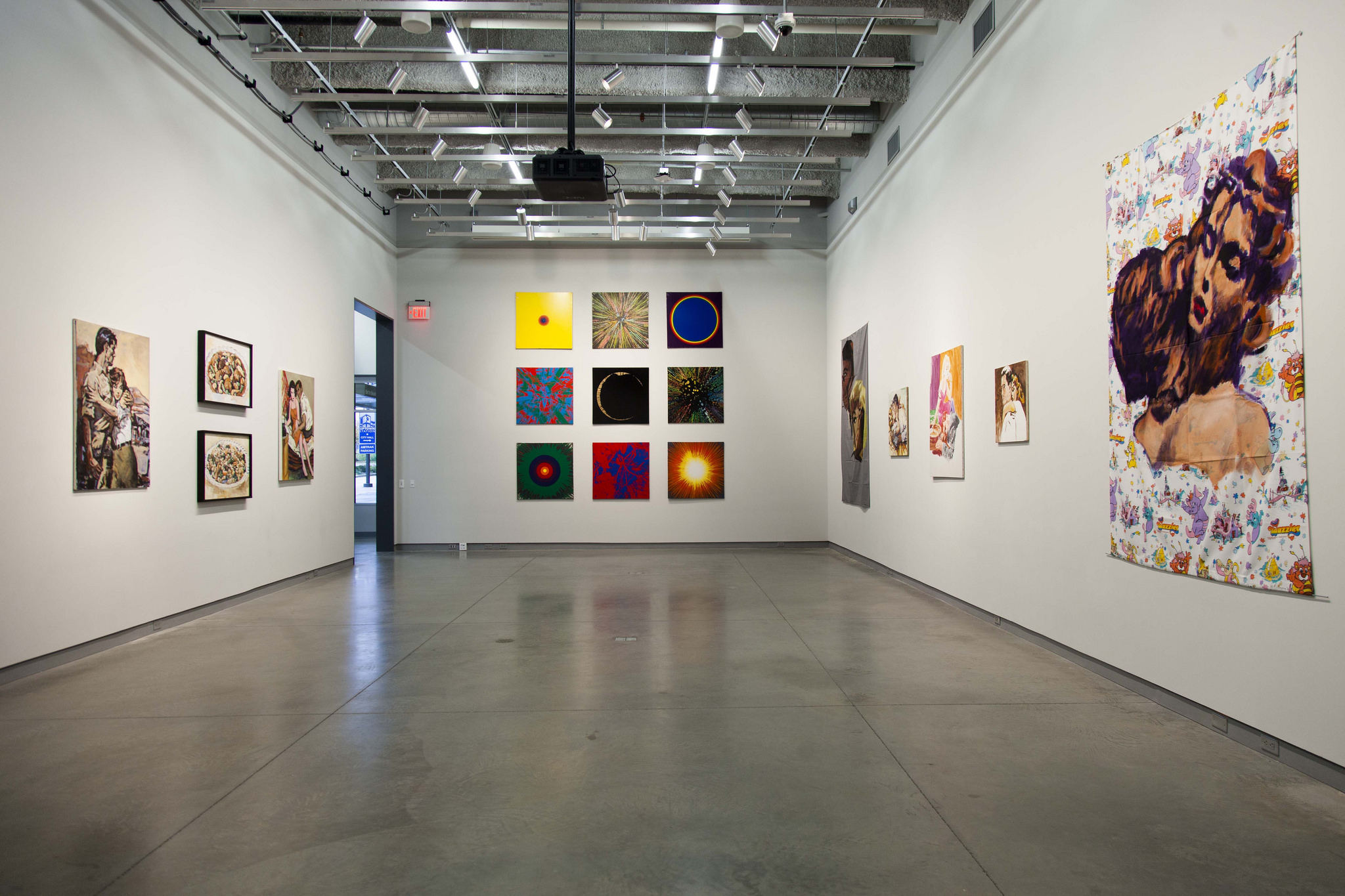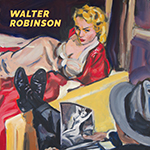Walter Robinson
View Sample Pages
2015 / ISBN 978-0-945558-41-5
Hardcover / 9 x 10 inches
144 pages / 200 color reproductions
U.S. $35 / Buy Now

October 17 - December 21, 2014
University Galleries of Illinois State University is pleased to announce the opening of Walter Robinson: Paintings and Other Indulgences, the inaugural exhibition at its new storefront space at Uptown Station in Normal, Illinois. The exhibition is the first museum survey of the prolific New York-based artist's paintings from 1979 to 2014. The ninety-four paintings on view provide a broad selection of the artist's work, including the pulp-novel romance paintings which garnered Robinson critical recognition in the early 1980s, still-lifes featuring over-the-counter pharmaceuticals, recent representations of Lands' End clothing models and online erotic selfies, and many others.
Born in Wilmington, Delaware, in 1950, and raised in Tulsa, Oklahoma, Robinson moved to Manhattan in 1968 to pursue an art history degree at Columbia University. By the late 1970s, he had become a critic for Art in America, co-founder of Printed Matter, Inc., co-editor and publisher of Art-Rite magazine, and member of the influential artist collective Collaborative Projects (Colab.) From 1983 to 1985 Robinson was art editor of the East Village Eye, and from 1996 to 2012 he was editor of the online journal Artnet Magazine.
Robinson presented his earliest paintings at the historic Times Square Show organized by Colab in 1980 at an abandoned building on West 41st Street, and within two years was exhibiting modestly scaled but brashly colored paintings of pulp romance cover illustrations at the seminal Metro Pictures gallery. In a fashion similar to Richard Prince and Jack Goldstein, he appropriated tropes of popular culture as a means of celebrating the emotional dynamics of images from mass media. Whereas the aforementioned artists mined photography and film, Robinson was examining painting itself, taking lurid illustrations from the 1940s and 50s and re-representing them in a style culled from "how to paint" books. Commenting critically on painting's role as both commercial enterprise and intimate act, he imbued his work with—in the words of art critic Carlo McCormick—"a devious sense of irony done with incredible sincerity." His square-jawed detective types and swooning vixens penetrate the psyche as archetypes of desire rather than clichés.
By the mid-1980s, Robinson's painting style had matured and become more succinct, with gestural flourishes that pastiched the Abstract Expressionists' sacrosanct personal touch. He had also strayed beyond the borders of appropriation by painting from his own photographs, while broadening his sphere of subjects to include Morandi-‐like arrangements of beer cans and bottles, monolithic over-the-counter pharmaceuticals and toiletries from Excedrin to Tampax (with allusive titles like Pain Killers and Fertility), and even outright bastions of kitsch such as greeting-‐card kittens and spin art. Recognizing the conceptual bent of Robinson'swork, even as he seemed to be on the brink of genre painting, critic Holland Cotter noted, "his still lifes of consumer amenities were like painted 'ready-mades.'" At the same time, Robinson became a chronicler of the burgeoning East Village scene, capturing unposed, loosely rendered yet spot-on portrayals of dozens of luminaries including gallerists Annie Herron and Doug Milford, writers Joseph Masheck and Carlo McCormick, and artists Martin Wong, Mark Kostabi, Ellen Berkenblit, and Mike Bidlo.
In paintings from 2000 to the present—whether exhaustive series of individual burgers from every imaginable fast-food restaurant, mail-order clothing models, or online porn selfies, Robinson addresses the collision of capital and everyday cravings in a media-saturated world. Among the most recent works in the exhibition are paintings in which single packs of cigarettes or liquor bottles are presented frieze-style, as frontally and iconically as possible. In the artist's words, "the idea was to revive the still life by remaking it as an object of desire—putting back the content that modernism [expunged] when it transformed the emblematic Dutch still life into a formalist exercise." The bold geometries of these soulful, wistful works allude subversively to this "content restoration" in their subtle references to abstractions by modernists like Richard Diebenkorn and Brice Marden.
The accompanying monograph, with photographs of nearly 200 paintings spanning the artist's thirty-five-year career, will be published in Fall 2015. It will feature texts by Barry Blinderman, exhibition curator and Director of University Galleries, Glenn O’Brien, Charles F. Stuckey, and art historian Vanessa Meikle Schulman.
Partial funding for the Walter Robinson publication has been provided by the Elizabeth Firestone Graham Foundation and an anonymous donor. Partial funding for the exhibition has been provided by the Illinois Arts Council, a state agency.
University Galleries is located at Uptown Station at the corner of Beaufort and Broadway. Parking is available directly above, and first hour is free. If you need special accommodations to participate in any event, please contact University Galleries at 309.438.5487 or gallery@ilstu.edu. Please allow sufficient time to arrange the accommodation. Please note that all events at University Galleries are free.
Image: Picture Perfect Kill, acrylic on canvas, 2012, 48 x 48 inches. Mima and César Reyes Collection, Puerto Rico
Friday, October 17
5:00 p.m. – 7:00 p.m.
Jeffery Deitch
, New York, NY
September 17 through October 22, 2016
The Galleries at Moore College of Art & Design
, Philadelphia, PA
January 23 through March 12, 2016.

View Sample Pages
2015 / ISBN 978-0-945558-41-5
Hardcover / 9 x 10 inches
144 pages / 200 color reproductions
U.S. $35 / Buy Now